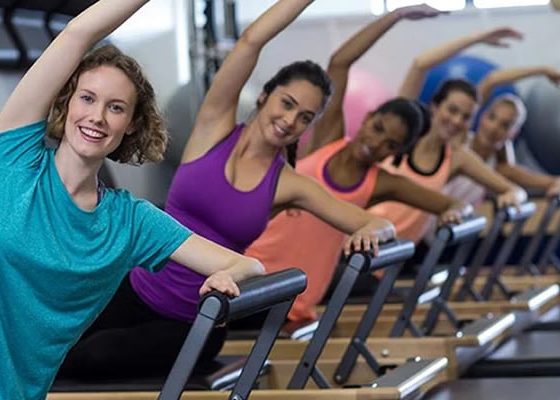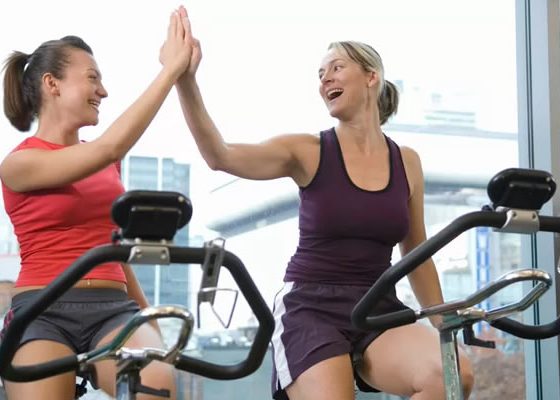Strength training for seniors can help keep older adults feeling healthy and confident. Even people who are facing chronic illness can benefit from strength training.
Getting Older, Getting Stronger
Some people think that you have to be young to build strong muscles. That’s just not true. Medical studies have proven that seniors can improve their muscles through simple weight training. Active seniors will tell you that regular exercise keeps their bodies strong.
Strength training for seniors doesn’t have to mean serious bodybuilding, although there are many seniors who enjoy competitive weightlifting. Doing just a few sets with small weights, a few times a week, can be enough to make a difference.
Advantages of Strength Training for Seniors
Seniors can benefit from strength training in many ways.
- Better bones: Weight-bearing exercise helps keep bones strong and ward off osteoporosis.
- More muscle mass: Body composition naturally changes with age, with both a decline in muscle mass and an increase in fat tissue. Strength training can help prevent the decline in muscle.
- A healthier heart: The American Heart Association recommends strength training for seniors, in part because heart disease risk is lower when body composition is leaner.
- Less arthritis pain: A study at Tufts University showed that targeted strength training for seniors could improve pain caused by moderate to severe knee arthritis.
- Improvements in back pain: Exercises targeted to the back muscles can reduce pain and increase flexibility.
- Fewer falls: Researchers in New Zealand offered strength training and balance exercises to women aged 80 and up. The women reduced their number of falls by 40%.
- A lower risk of diabetes: Exercise, and the strong muscles it builds, can help keep blood sugar under control.
- A higher metabolism: Strength training can increase resting metabolism, which means that the body burns calories more quickly.
- A sexier body: Who says seniors can’t be sexy? Strength training builds up biceps, tightens abs, and firms up thighs-and that looks good on anyone.
How to Get Started
The U.S. Centers for Disease Control and Prevention (CDC) says that exercise is very safe for most people, but that checking with your doctor first may be a good idea. In particular, people with chronic conditions, including heart disease, arthritis, diabetes, and high blood pressure should see the doctor before beginning an exercise program. It’s possible to have these problems and not know it. Chest pain, problems with balance, dizziness, or passing out are all reasons to head to the doctor before you head to the gym.If you don’t have any experience with strength training for seniors, get some information to help you design your program. One good place to begin is the CDC’s Growing Stronger page, which has strengthening exercises designed especially for seniors. The exercises are divided into three stages, so you can move to more intense training as your strength improves. You don’t need any special equipment, just a set of lightweight dumbbells and a pair of small ankle weights. In fact, the first stage doesn’t require any equipment at all.
Gym Workouts
Some people prefer to do their workouts at a gym. Seniors sometimes feel intimidated by the younger, stronger crowd in the weight room. But once you’ve gotten the hang of the weight machines, you’ll probably find that you feel right at home.
If you’re new to the equipment, ask at the front desk if there is a trainer who can help you. The gym should have someone who can show you how each machine works and make sure you’re doing the exercises right. Some gyms also have personal trainers who, for an extra fee, will work with you one-on-one several times a week.
Moving Up
If you’re diligent about your training, pretty soon you’ll feel ready to switch to stronger weights or more repetitions. Here are some rules of thumb about when to move up:
- Reassess regularly. Every couple of weeks, take notice if your exercises are feeling too easy. If so, increase your weights a bit and check again.
- Aim for moderate difficulty. You should be able to lift your weights ten times in a row with moderate difficulty.
- Increase the weight slowly. To avoid injury, increase your weights by only a few pounds at a time. The CDC suggests that women start with a set of one-pound, three-pound, and five-pound dumbbells. For men, the recommendation is for three, five, and eight pounds. Ankle weights should be increased a half-pound to a pound at time.



